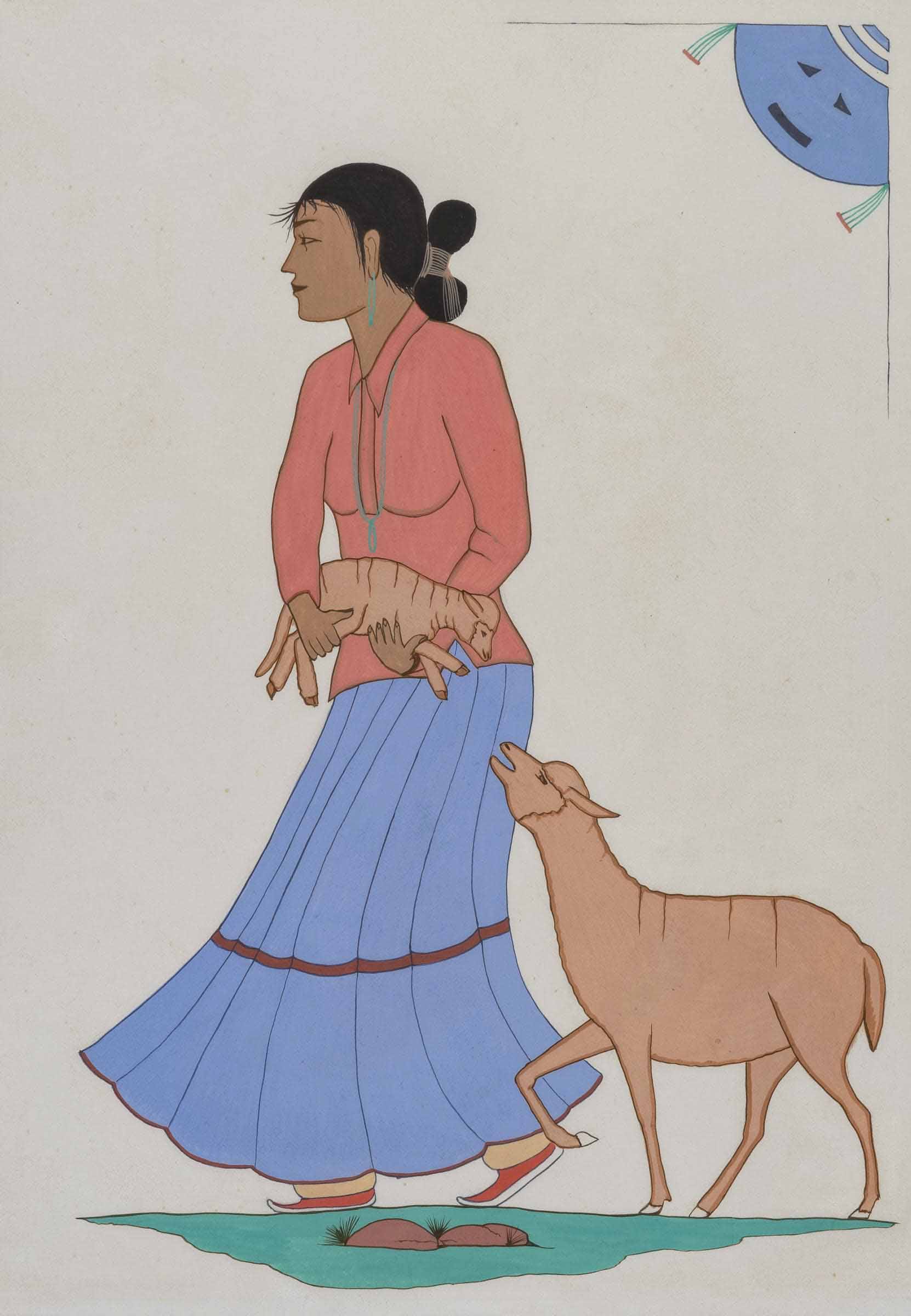This untitled painting by artist Timothy Begay depicts a Navajo girl with a lamb. It measures ten inches in width and fourteen inches in height, and is painted on paper using casein paint and tempera.
Untitled (Navajo Girl with Lamb) demonstrates how the flat aesthetic of the 1930s Studio Style limited artists’ ability to communicate meaning. In this image, the sacred and spiritual relationship between his people and their sheep is reduced to a pleasing, decorative scene. For more about this painting style and the history of this painting, read the “About this Artwork” section above.
In the painting, a young woman walks to the left, carrying a baby lamb, while an adult sheep walks beside her. The image has no painted background—the artist leaves the paper exposed as the backdrop for the scene. The woman wears a salmon-colored long sleeve shirt or blouse, with a long blue necklace draped around her neck. She also wears a long skirt, light periwinkle blue, with a thin horizontal red line across the lower portion. Her knee-high leather-wrapped moccasins, beige at the top and bright orange at the bottom, peek out from beneath her skirt. Her face is shown in profile, and a blue earring dangles from her left ear. Her black hair is pulled back into a traditional Diné (Navajo) bun, known as a tsiiyéél. The bun is vertical, with two round sections at the top and bottom, separated and held in place by tightly wound beige yarn.
The woman holds the baby lamb with both hands at her waist. The lamb has a small tan body, and its legs dangle as it is held. It strains its neck to look down at an adult sheep walking just below waist height beside her. The adult sheep is also painted with a tan body and is straining its neck to look up at the lamb, its front leg raised and mouth open as if calling to it.
Beneath the woman’s feet, the artist painted a smooth patch of turquoise-green grass on which she and the sheep walk. In the center of the triangle-shaped patch are two brown rocks and small tufts of grass stalks.
There is one other element in the painting, located in the upper right corner. Its design evokes the representation of the sun, drawn to fit the corner of the paper. It is a light blue circular shape that appears to have a face, formed by two small black triangles for eyes and a slightly curved black rectangular strip for a mouth. From the right and left sides of the face, ribbon-like strands of light green hang, with red fringes at the ends.

